Colgear Plantation
Ten acres of mixed woodland a few minutes' walk from our carriages at St Germans
Our woods are beautiful at all times of the year. At the moment we are in the process of removing the Japanese larch to create a more mixed native woodland. This has opened up pathways for butterflies and increased the number of wildflowers tremendously. At the bottom of the page you will find information on the flora and fauna in the woods, and below are pictures of our woods through the seasons. We have put spotting sheets in our carriages, but if you would like to do a little research first, why not download some of the excellent resources on the Woodland Trust Nature Detectives Site. You can also see more on our Pinterest Woods Board.
Spring
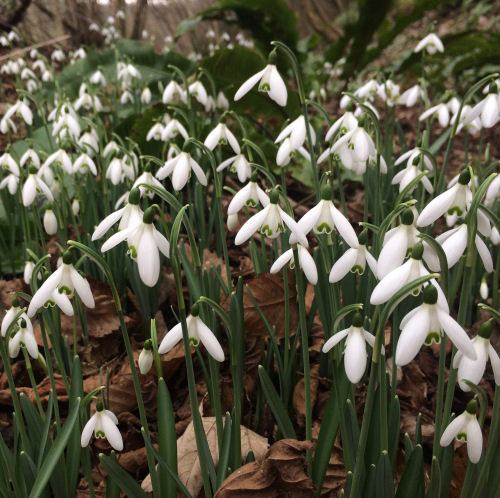 Spring starts in January with snowdrops.
Spring starts in January with snowdrops.
Until 2015 we had just had a few isolated clumps, but over the last few years have divided, replanted, replenished, relocated from friend's gardens and purchased different varieties. Work clearing the woods has opened the canopy and we were delighted to discover a proliferation of native snowdrops making their way into the bottom part of the woods. We have capitalised on this by greating a special snowdrop garden, where the majority of the species snowdrops have been planted. We have developed this as a memorial to Lizzy’s Mum Frankie Lister, who helped us in the division and planting of the early stages of the walk.
We have about fifteen varieties of snowdrops at the moment, and are hoping to build on these in years to come. Some are named, some we have named ourselves. The varieties are; Nivalis: Penelope (our native snowdrop) Lilyman’s Pound (after our friends Dave and Pat from Pound Farm, Yelverton), James Blackhouse, Sam Arnott, Emma West and The Ceramicist (both of the later came from our friend’s garden in Higherland, near Callington). Doubles include Hipployta, Ophelia, Cordelia (all Greatorex varieties) and Flora Pleno variants Jean and Henry (from Menheniot) Dave and Pat (Yelverton) and Molly Shannon (Saltash). Green and unusual snowdrops are Merlin, Trym and Frankie Lister (a green tipped Scharlockii snowdrop named after my mother, who's garden it came from). Finally we have a galanthus elwisii Cedric’s Prolific. The snowdrops are at their best from mid January to late February.

Wild garlic begins appearing in March and is usually in full bloom by April, as are the primroses. And of course what could be lovelier than the unfurling ferns.
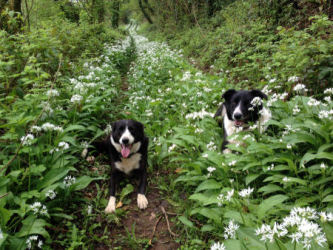
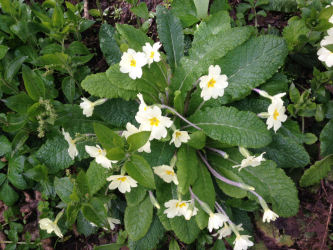
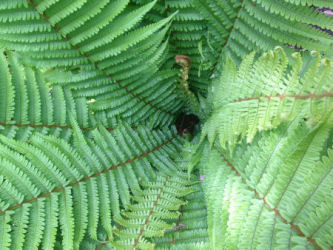

Summer
 After the garlic come the bluebells in the glade at the end of the woods. The new paths we have opened by clearing tracks and felling the larch have created the most amazing flower borders.
After the garlic come the bluebells in the glade at the end of the woods. The new paths we have opened by clearing tracks and felling the larch have created the most amazing flower borders.
In summer foxgloves, buttercups, campions, enchanter’s nightshade, purple flowered dead nettle and dog’s mercury cram for attention. Look out for animal prints at any time; you'll find deer, badgers, foxes and mice all live here. There are bats and buzzards in the quarry, and this May a tawny owl was seen flying along the lower track. The summer is a great time to see fledgling birds and butterflies.
The track through the field is a pleasure too; look out for red clover, ladies smock, plantain, wild sorrel and buttercups.
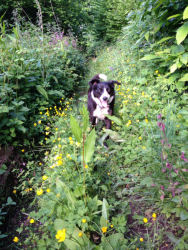

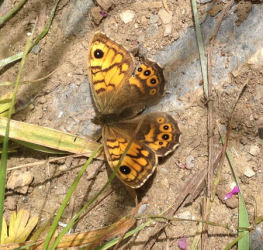
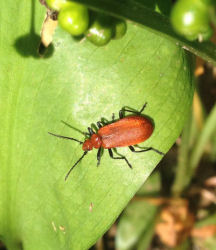
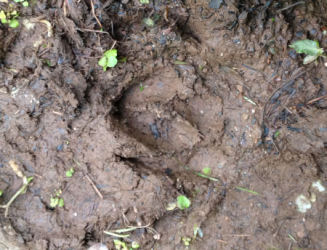
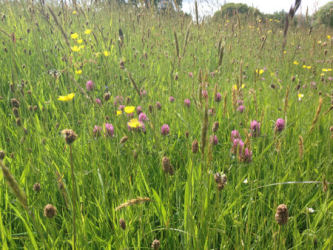
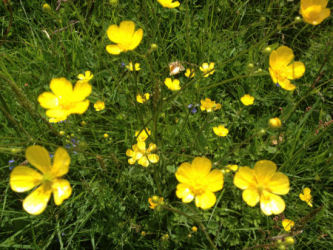
Autumn
An autumn walk in the woods is always a pleasure. And there is the bonus of searching for sweet chestnuts and hazel nuts too! We have several mature sweet chestnut trees in our woods. The wood is very hard and long lasting; it is the primary wood we use in our carriage restorations. Do look out for interesting fungus too; we have elve’s ears jelly fungus, which is bright red, and if you are lucky you may get to see the fairy rings of the large geotropa mushroom.
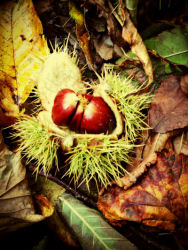
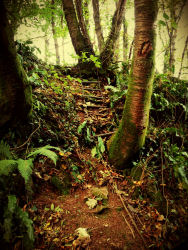
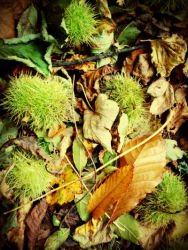
Winter
In winter you can enjoy the magnificent views through the bare trees to the lovely rolling countryside beyond, and look out for signs of new life; the first snowdrops will become visible in late December.
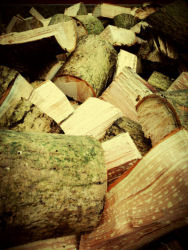
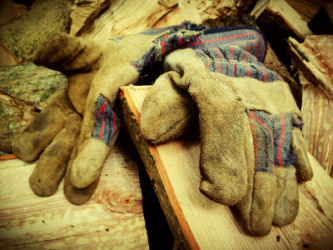
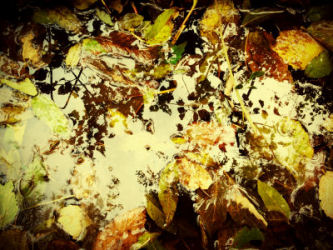
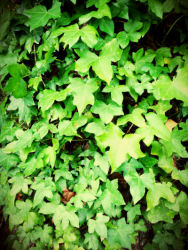
Flora and Fauna
We have put up boards as you go along for you to peruse and enjoy. Want to know more? There are a number of good sites that do excellent conservation work. We recommend Cornwall Wildlife Trust and The Woodland Trust.
Sycamore - grows like a weed and is favoured by squirrels, which eat the bark. It is useful in adding some protection against squirrels for the other trees. Sycamore is used for making chopping boards, as its wood is relatively tasteless. It is host to 15 species of insects and 183 lichens. Its seeds, like little aeroplanes, are very efficient colonisers! Try sycamore seed racing - drop from a height and see which lands first. Is there any difference with only one wing?
Beech - is an attractive tree with good wildlife value. Its nuts provide winter food, and because it holds its leaves through winter it provides valuable shelter and acts as a host to over 64 insect species, 206 lichens and several fungi. In autumn the leaves colour beautifully. We try to favour beech saplings wherever possible. Can you find a beechnut? There are always lots of casings, but the animals always get to the fruit first!
Cherry -we believe the cherry trees around the quarry were originally planted by quarrymen throwing away their cherry stones. We try and favour any cherries saplings. Cherries provide fruit for the birds, blossom for pollinating insects and useful leaf litter. The hard wood is excellent for turning. You should find plenty of stones, but the fruits never hang around for long. By being eaten by birds the seeds are spread far and wide.
Oak - there are many different sorts of oak - the common oak is the deciduous penduculate oak, hosts to 284 associated insect species and 324 lichens. The common, pedunculate, or English, oak is the commonest tree in southern and central British broadleaved woods. In fact, throughout Europe it has been the predominant timber tree since prehistoric times. They can be spotted from afar by their tendency to look like a giant broccoli. Oaks like an open canopy, and for that reason there are very few in this wood. This is by far the largest. Once felling of the larch is complete we will be planting more oaks. You can examine and admire the handsome ancient oak in the field before the woods.
Hazel - is a very useful wood, perfect for traditional hurdles, bean, pea and walking sticks. In the autumn it provides useful nuts for the wildlife and its flowers are loved by bumble bees. It is also complimentary to many fungi. Hazel copices well and is host to 73 insect species and 160 lichens. Did you know? Hazel is monoecious: both male and female flowers are found on the same tree. Yellow male catkins appear before the tiny red female flowers, which are pollinated by the wind.
Elm - sadly Dutch Elm disease decimated most of Britain's Elms in the 1960s. This disease is cyclical - fossilised wood samples show it goes back to the ice age. Thankfully the elm is not completely dead as a species, there are still several in Colgear, but unfortunately they only grow to twenty years or so before succumbing to the virus, which is caused by a member of the sac fungi, and spread by elm bark beetles. Did you know? The name Dutch elm refers to its identification in the Netherlands by a Dutch phytopathologist (studier of plant diseases) in 1921.
Sweet Chestnut - some of our oldest and most beautiful trees are Sweet Chestnut. In the winter the nuts are perfect for roasting over a fire and it is for its fruit and flowers that Sweet Chestnut is most beneficial to wildlife, supporting butterflies and providing winter fodder for small mammals. The wood of Sweet Chestnut is durable and hard, making it a good alternative to mahogany and other tropical hardwoods. Sweet Chestnuts were introduced to the UK by the Romans for its nuts, which was often ground into flour. Can you find a Sweet Chestnut? It's easiest to open the casing with your boots as the outside is very prickly. In summer you might find long panicles of Sweet Chestnut flowers, but you'll have to wait a few months for the fruit.
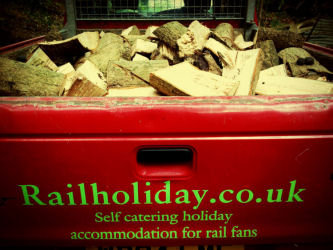
Holly, Laurel and Rhododendron - holly is an evergreen tree, providing useful blossom for insects and berries for birds in the winter (although if it does not get enough sun it will not fruit). Like Holly, Laurel is fast growing and can quickly become a nuisance, darkening the woodland canopy. Rhododendron Ponticum is a garden escapee that has rapidly colonated railway banks and woodland. At the moment there is not too much of any of these species, but we are monitoring them carefully and will be removing any that outgrow their welcome.
Japanese Larch - In the 1960's this wood was purchased by the Forestry Commission, clear felled and planted with larch. It is an unusual conifer, as it is deciduous. The older varieties of trees have since re-established themselves, by seeds and coppice, but as a result there are few trees in Colgear older than 50 years. In 2012 we applied for a felling licence to remove the larch as Cornwall is threatened by phytophthora ramorum (sudden oak death), which larch is particularly susceptible to. We hope by removing the larch we will save the Sweet Chestnut, which is also vulnerable. The effect will be greater light into the woods and a re-establishment of the native woodland of ancient times.
Norway Spruce - These saplings have been planted as a crop to provide Christmas trees in the future. Large spruces provide valuable roosting properties for owls and game birds and shelter for deer in the winter. The Norway Spruce is a tall, evergreen conifer, originally from Scandinavia that was introduced into the UK in the 16th century. Spruce trees differ from firs by having downwards hanging cones, and from pine trees by having shorter needles.
Elder - traditionally credited with magical qualities, the Elder is a common shrubby tree of great usefulness, with its flowers and fruit used for a variety of herbal medicine. In June its scented white flowers can be used to make cordials and country champagne, and in autumn its black berries provide a valuable food source for birds. Elder was called the medicine chest of the country people and believed to cure all ailments. Its wood was traditionally used for bellows and country pipes. Unlike other trees, the Elder's trunk is formed by a patchwork mess of curving drooping stems. This is why the Elder is neither elegant nor reaches any great height. Did you know? It was once believed that Elder Mother lived inside the tree, and cutting down the tree would make her angry!
Hawthorn - is a popular choice for a hedge and supports many insect species, eg hawthorn shield bug, earwig, common flower bug, bumblebees, cockchafers, etc. These are eaten by predators, eg Devils' coach horse, violet ground beetle, harvestman, garden spider, wren, blue tit, etc
Blackbirds and other thrushes (including redwings and fieldfares), greenfinches, yellowhammers, chaffinches, starlings and many other birds relish the haws in autumn. Small mammals, birds, insects and other invertebrates nest, roost and/or hibernate here, e.g. wood mouse, wren, robin, blackbird, song thrush, brimstone and peacock butterflies, lacewing, ladybird, slow worm, common toad, etc.
Lime - we planted this lime when we first bought the woods. It does not produce lime fruits as its name suggests, but is a native tree, once dominant in woodlands, but now relatively uncommon. It is a hermaphrodite - both male and female are represented in one flower. In the past its fibrous bark was used in rope and lime flowers played an important part in honey production. Today the wood is used for piano soundboards. Lime leaves are a popular food for many moth species and the flowers provide nectar for bees. Lime trees also improve the nutrient structure of the soil.
Ash - valued for firewood that burns easily and without spitting, ash self seeds freely. In Norse mythology it was known as the Tree of Life and believed to have medicinal and mystical properties - burning it would ward off evil spirits. Named after its grey bark, flowers can be male, female or both and its spinning seeds are called keys, as they look like old-fashioned keys, or spinners.
The Ash has high conservation value. The airy canopy and short leaf stay allow a lot of sunlight through to the woodland floor and hence a rich and varied ground flora can grow, such as wild garlic and dogs mercury . This also means plenty of food to allow a wide variety of insects and birds. Birds such as Bullfinch enjoy the seeds and Woodcocks, Woodpeckers, Redstarts and the Nuthatch can find plenty of good nesting sites. In mixed Ash woodlands you may even see a dormouse!
Holm Oak - the evergreen Holm Oak was introduced into Britain in the 17th century from Europe. It is named after the old name for holly - holm - as its young leaves are pointy. It produces a strong durable timber. However it is also damaging to the biodiversity of native woodland and darkens the canopy, and so will not be encouraged to spread in Colgear woods - at the moment there are very few here and they will be thinned out to favour the native species. Did you know? The ancient Greeks used Holm oak leaves to tell the future and believed wearing necklaces with acorn symbols would increase their fertility.

Back to TOP
Contact Railholiday by email at office@railholiday.co.uk or by phone on (+44) 01503 230783. ©



